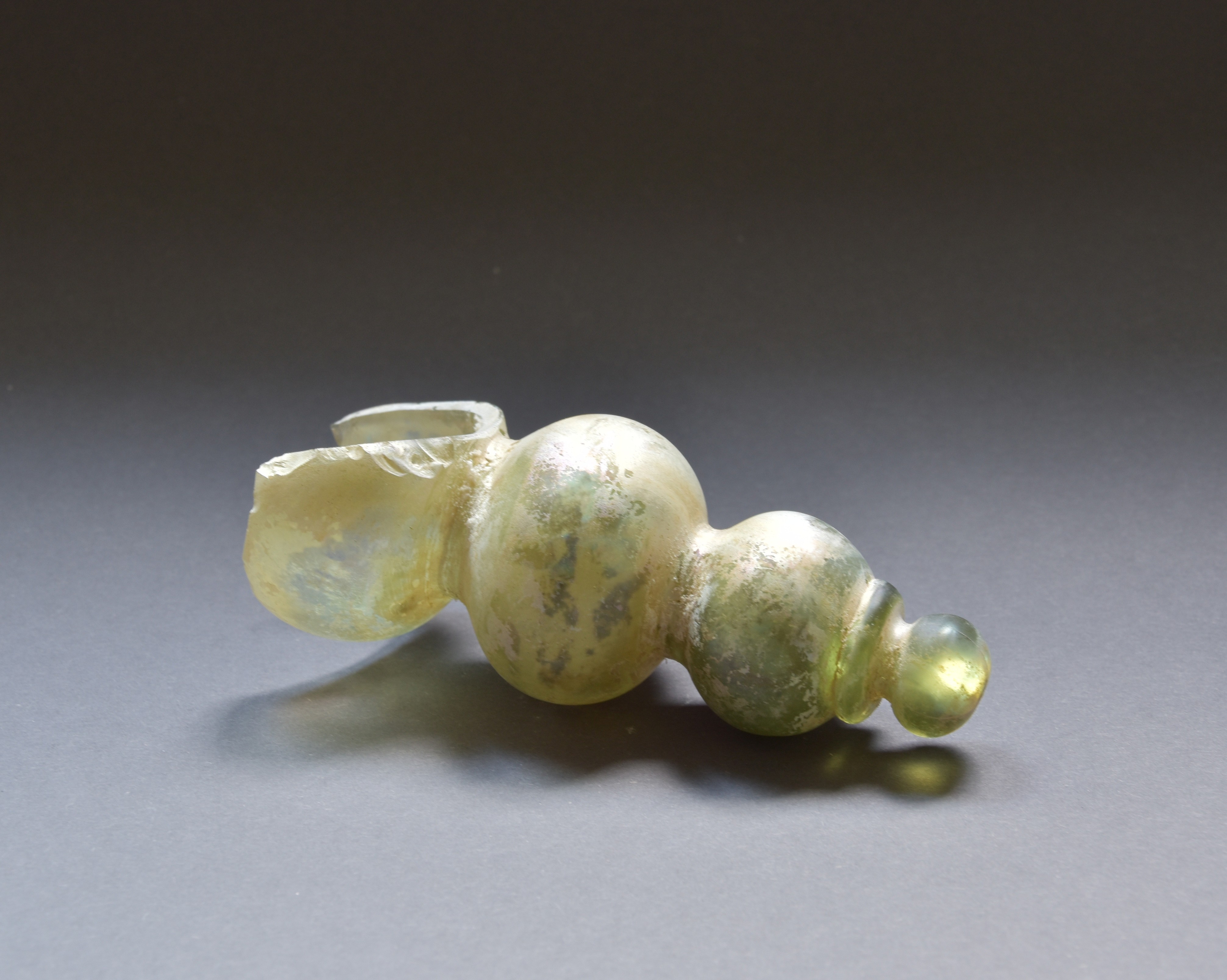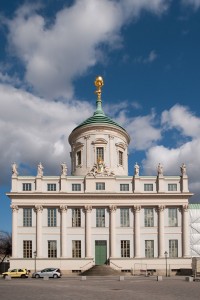Hohlknauf aus farblosem, grünstichigem Glas, bestehend aus drei übereinander liegenden Kugeln, die sukzessive größer werden, zum Abschluss angesetzt eine kleine, massiven Kugel über einer Einschnürung, vom Deckel abgebrochen, starke Korrosionsspuren, irisiert.
Das außergewöhnlich große Format dieses Bodenfunds spricht dafür, dass er als Knauf eines monumentalen Deckelpokals fungierte. Er kam 1988 bei Ausgrabungen am ehemaligen Standort des Potsdamer Stadtschlosses in einer Fanggrube eines Abwasserkanals zur Havel zutage und wurde dem Museum im gleichem Jahr übergeben. Der Gesamtkomplex datiert in die 2. Hälfte des 17. Jahrhunderts (Bronk, Chemisch-analytische Untersuchungen, 1998, S. 88). Deshalb ist anzunehmen, dass es sich bei diesem Fragment um ein Produkt der Potsdamer Glashütte handelt, ab 1674 in Drewitz, ab 1678 zudem am Hakendamm ansässig. [Verena Wasmuth]
en

